These canning directions concern roasted peppers, packed in water.
These directions apply to peppers regardless of the colour and they also apply to chiles.
You can can peppers (hot or sweet). You can can them, pickled or plain.
Pickled peppers can be water-bathed or steam-canned. Unpickled plain ones such as these must be pressure canned.
This recipe is from the USDA Complete Guide; it requires peeling the peppers.
Ball and Bernardin provide directions for plain unroasted, unpeeled peppers.
See also: Dehydrating roasted peppers.
Quantities of peppers needed
Numbers are approximate guidelines.
Allow ½ kg (1 pound) raw whole peppers per ½ litre (1 US pint) jar.
The recipe
Jar size choices: ¼ litre (½ US pint) or ½ litre (1 US pint)
Processing method: Pressure canning only
Yield: varies
Headspace: 3 cm (1 inch)
Processing pressure: 10 lbs (69 kPa) weighted gauge, 11 lbs (76 kpa) dial gauge (adjust pressure for your altitude when over 300 metres / 1000 feet)
Processing time: 35 minutes for quarter or half-litre (pint or half-pint) jars

Canning roasted peppers
Instructions
- Wash peppers.
- Remove cores and seeds.
- Roast peppers using method of your choice.
- Cut into quarters; small ones may be left whole.
- Pack into quarter-litre (½ US pint) or half-litre (1 US pint) jars.
- Leave 3 cm (1 inch) headspace.
- Optional: a pinch of salt per jar.
- Top up each jar with clean boiling water (such as from a kettle, for instance), maintaining headspace.
- Debubble; adjust headspace.
- Wipe jar rims.
- Put lids on.
- Processing pressure: 10 lbs (69 kPa) weighted gauge, 11 lbs (76 kpa) dial gauge (adjust pressure for your altitude when over 300 metres / 1000 feet.)
- Processing time: either size jar 35 minutes.
Nutrition
Processing guidelines below are for weighted-gauge pressure canner. See also if applicable: Dial-gauge pressures.
| Jar Size | Time | 0 to 300 m (0 - 1000 feet) pressure | Above 300 m (1000 ft) pressure | |
|---|---|---|---|---|
| ¼ litre (½ US pint) | 35 mins | 10 lbs | 15 lb | |
| ½ litre (1 US pint) | 35 mins | 10 lbs | 15 lb |
How to roast the peppers
You may roast the peppers in any way you feel that you will have the most success with. It won’t affect the canning process or safety.
If you haven’t roasted peppers before, the Presto Guide gives perhaps the most succinct version of the USDA directions:
Cut two or four slits in each pepper, and blister using one of the following methods:
- Oven or broiler method: Place chile peppers in a 200 C (400°F) oven or broiler for 6 to 8 minutes until skins blister;
- Range-top method: Cover hot burner, either gas or electric with heavy wire mesh. Place chilies on burner for several minutes until skins blister. [1] Presto Pressure Canner and Cooker, 23 quart model, #72-719F. 2014. Page 13.
We found that either of the suggested above methods left us pick-picking little bits of skin off for hours, though you may have better luck.
We now use the following method; it draws on a new technique that Ball has introduced as of its All New book for roasting veg:
Line rimmed baking sheets (as many as you can fit in oven at one time) with tin foil (optional but makes cleanup far easier.) Set aside. Wash, stem, seed the peppers. Put on ungreased surface cut side down. Roast at 190 C (375 F) for about 25 to 30 minutes, until the skin on some of them begins to char. (How long exactly will depend on how hot your oven runs.) Remove from oven, let cool for about 10 to 15 minutes or until cool enough to handle safely. The skin will be wrinkled. Pinch it at one end, and most of the time you will be able to pull it away entirely from the pepper in one go. If the skin isn’t that wrinkled, then you need to roast longer. If the skin sticks a lot, then you need to let it cool a bit more.
If roasting with our preferred method, budget in your mind about 2 hours prep work per half US bushel (5 kg / 11 lbs.) of peppers. The other two methods were far slower for us.
Reference information
How to pressure can.
When pressure canning, you must adjust the pressure for your altitude.
More information about Salt-Free Canning in general.
What is the shelf life of home canned goods?
Recipe notes
- Do not do larger jars.
- If you are doing hot peppers, it is one thing as a cook to brave prepping one or two peppers with bare hands; it is a different thing altogether to prepare them in industrial quantities. Wear gloves, or your hands will go dry and burn for hours on end, even with mild Jalapeno peppers. (Sweet peppers should be fine.)
- While peppers are flopping around in the jars during processing, they can be prone to pushing water out of the jar, leaving you with a low water level after processing. To help alleviate this, be sure to build up the pressure in the canner slowly and to let the canner cool slowly and naturally after processing (you should always do both, anyway, but particularly with items such as peppers and greens that are prone to pushing water out of jars.)
- Instead of the salt, you can use a non-bitter, non-clouding salt sub. We have found Herbamare Sodium-Free performs well in that regard.
Recipe source
United States Department of Agriculture (USDA). Complete guide to home canning. Agriculture information bulletin No. 539. 2015. Peppers.
Presto Pressure Canner and Cooker, 23 quart model, #72-719F. 2014. Peppers.
Nutrition
Serving size: 250 g, drained (about one half of a ½ litre / US pint jar, if 500 g went into the jar.)
- 78 calories, 10 mg sodium
- Weight Watchers PointsPlus®: 0 points (peppers are free on Weight Watchers).
* Nutrition info provided by https://caloriecount.about.com
* PointsPlus™ calculated by healthycanning.com. Not endorsed by Weight Watchers® International, Inc, which is the owner of the PointsPlus® registered trademark.
What size of pepper pieces?
New Mexico says, “Chiles can be cut in pieces or left whole. Pack chiles loosely and add boiling water.” [2] Flores, Nancy. Sweet Green Peppers. New Mexico State University. E-308. May 2008. Accessed May 2015.
The USDA in its directions for Sweet Green Peppers says, “Large peppers may be quartered.” Texas A&M University Extension says, “large peppers should be quartered.” [3] Van Laanen, Peggy. Preserving Peppers. Texas A&M University Extension. L-5309. Accessed March 2015 at https://university.uog.edu/cals/people/PUBS/Food/L-5309.pdf.
Both Ball and Bernardin want peppers quartered, too.
What’s clear is no one wants you dicing them, or mincing them, etc.
Why roast and peel?
The University of California Coooperative Extension says, the roasting and peeling are for tough-skinned peppers:
Tough-skinned peppers. Peel peppers by first heating them….. Other peppers: remove stems, cores, and seeds; blanch 3 minutes.” [4] Harris, Linda. Peppers: Safe methods to store, preserve and enjoy. University of California Coooperative Extension. Publication 8004. 1998. Page 4. Accessed May 2015 at http://anrcatalog.ucdavis.edu/pdf/8004.pdf.
Consequently, how you want to prep peppers depends on if you want the roasted taste and if you have the patience to successfully peel them. If you don’t care enough about the roasted pepper taste to go to the extra work of peeling them, then follow the plain unroasted directions.
Pickle the peppers if you don’t want to pressure can them
You cannot water bath or steam can plain roasted peppers packed in water. For water bath or steam canning, they must be pickled to be safe from nasties. Use a tested recipe for pickled peppers such as this one for Pickled Roasted Peppers from Ball.
The USDA Complete Guide (2015) also has recipes for pickled peppers, as well as for pickled peppers marinated in oil.
References

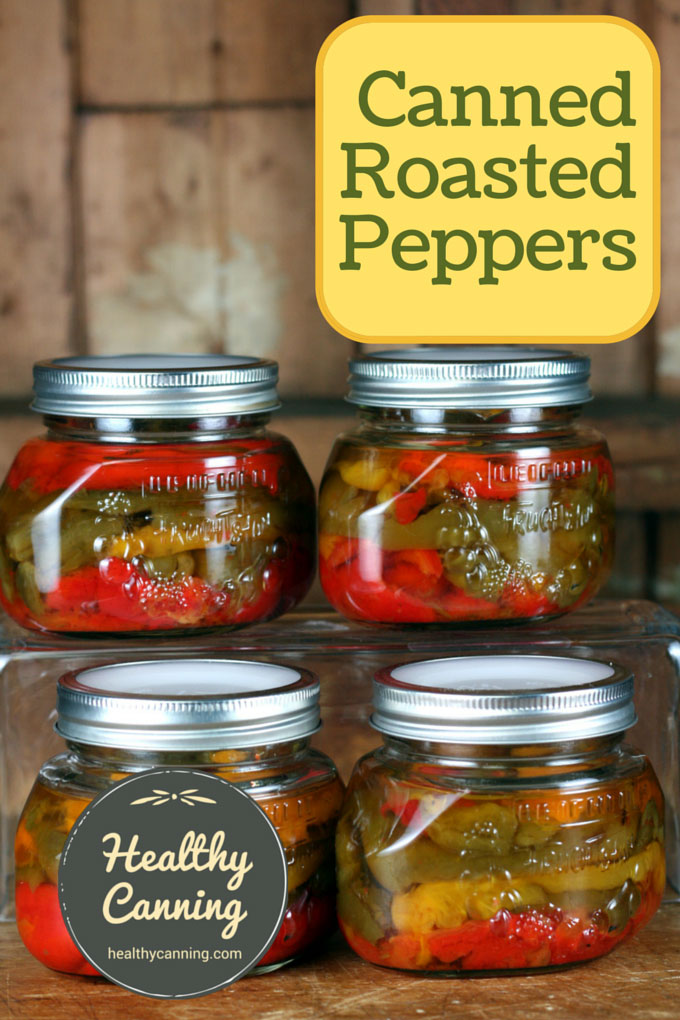
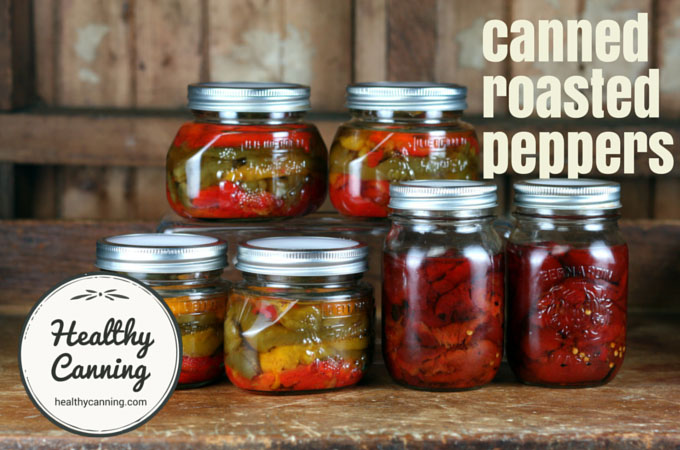
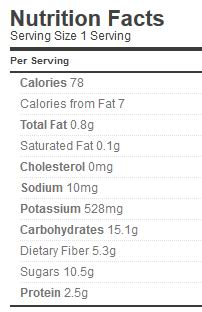
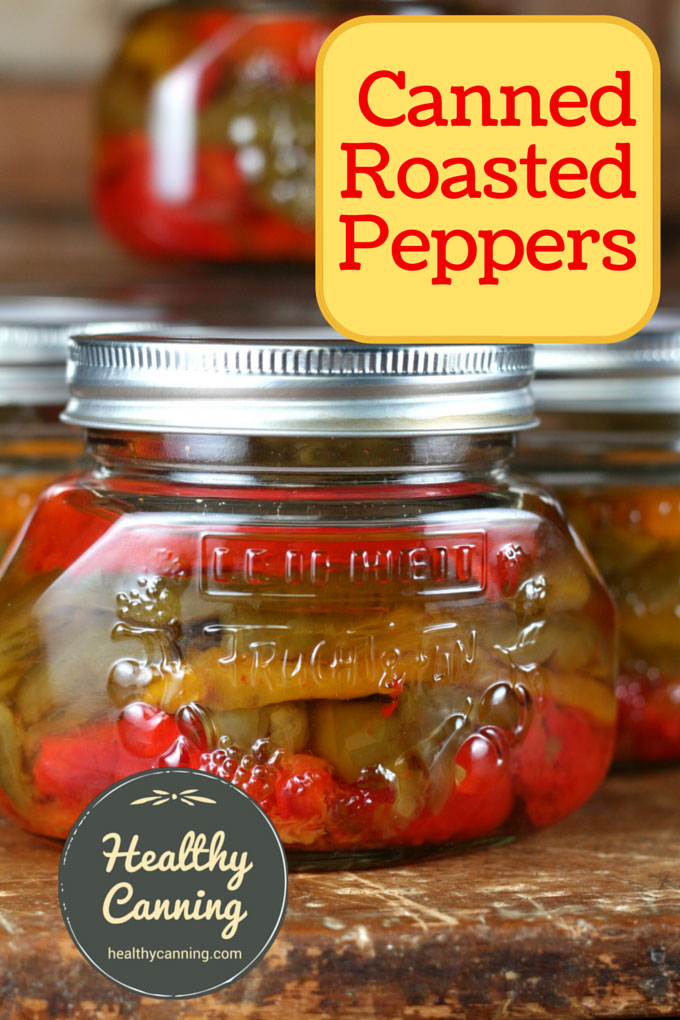
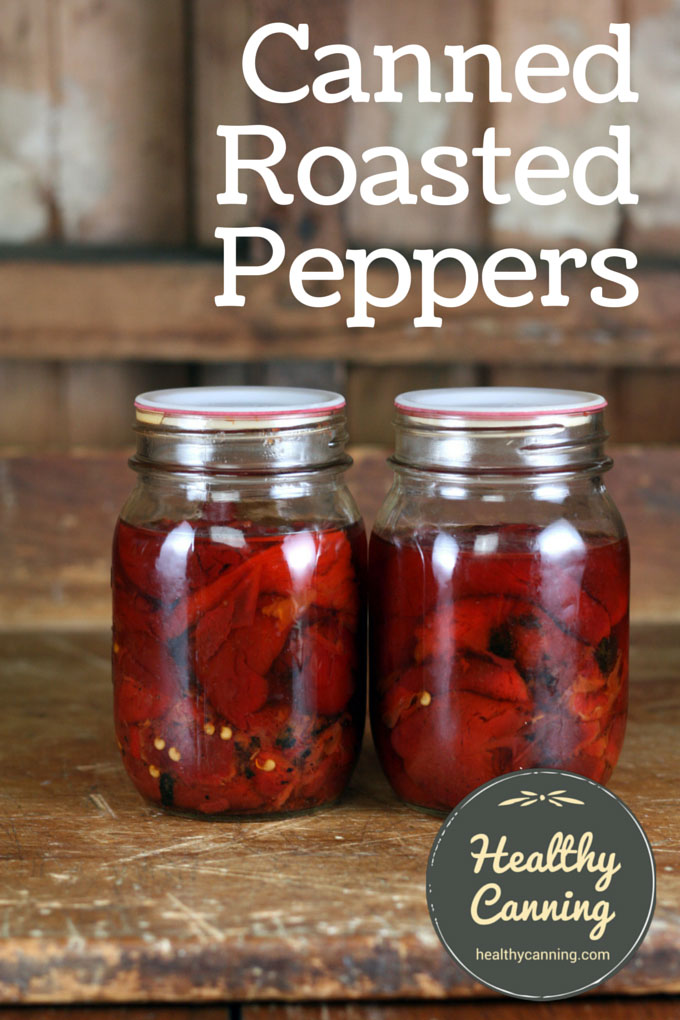
Mary
I pressure canned my roasted pablano peppers exactly as written. I debubbled. All the liquid siphoned out of my jars. They all sealed. Are they safe to consume. Thanks so much for your help.
Meleray
Another fun way to roast your peppers.. I cheated haha brush outside of whole pepper with olive oil.. toss whole into air fryer. 400 degrees 10 min. In a bowl with plastic wrap covered tight 15 min skin comes right off..
Connie
I read not to go bigger in jar size. Can I go smaller? 4 oz jelly size? Thanks.
Paul J Sanguinetti
I char my peppers right on the BBQ grill. Adds a nice smokey flavor that is very much in line with my Italian upbringing. And it keeps the heat outside!
Sara
We roast peppers often and to avoid picking skins for hours, place then in a large bowl and cover with plastic wrap. They sweat and then peel easily.
Sarah Brideau
I canned this recipe yesterday and once the jars began to cool down, I realized I had lost all my liquid while canning and the peppers looked like wet Kleenex at the bottom of the jar. So I decided to freeze them. That whe. I realized how un believes l’y bitter it tasted. I don’t understand what happened. First with the hé fluid loss: I didn’t overpack and respected the headspace. My water wasn’t boiling like crazy either. Just right…
And is it normal for peppers to turn out tasting unedibly bitter?
Any insight would be greatly appreciated.
Healthy Canning
Hi Sarah, I’m sorry that happened to you. After all that work, it would have been very disappointing. I’m going to suggest that you contact one of these Master Food Preserver groups https://www.healthycanning.com/master-food-preserver-help-groups/ ; one of their trained volunteers will be happy to walk through with you what factors might have caused it. Tell them you were working through the USDA process for peppers: https://nchfp.uga.edu/how/can_04/peppers.html
sylvia
Just visiting this site today… better late than never…Sahrah. I’m pretty new to pressure canning. But have had great success and did a lot of studying. One thing that causes the liquid to expel. Is opening and/or releasing the pressure to soon. This will cause the jars to spurt out the liquid in them.
Mommadukes
Made your pepper recipe they turned out very well
Healthy Canning
Thanks, can’t claim credit though, recipe not ours, it’s from the USDA Complete Guide.
Erin Sewell
Is it okay to add other ingredients, like fresh herbs or roasted garlic paste, to this recipe to up the flavour? I’ve done that with peppers in olive oil that I didn’t try to seal, and it’s so delicious that I’d like to try it in the pressure canner I’m shortly going to buy.
Healthy Canning
For a review of recommendations on jazzing up your canning, see: https://www.healthycanning.com/safe-tweaking-of-home-canning-recipes/ and https://www.healthycanning.com/how-to-jazz-up-your-pressure-canned-vegetables/
Cindy R
I roast my peppers over our charcoal grill, place in brown paper bag to steam and then peel them. These I add to my salsa and it really ups the flavor. I don’t make a hot salsa but a sweet with cilantro. I always have lots of peppers left that I don’t want to pickle. I will be using this recipe for peppers next season when I get a pressure canner. Thank you